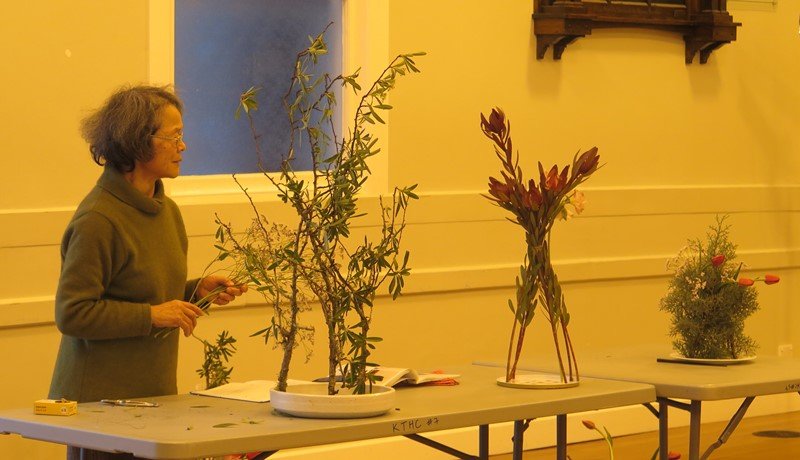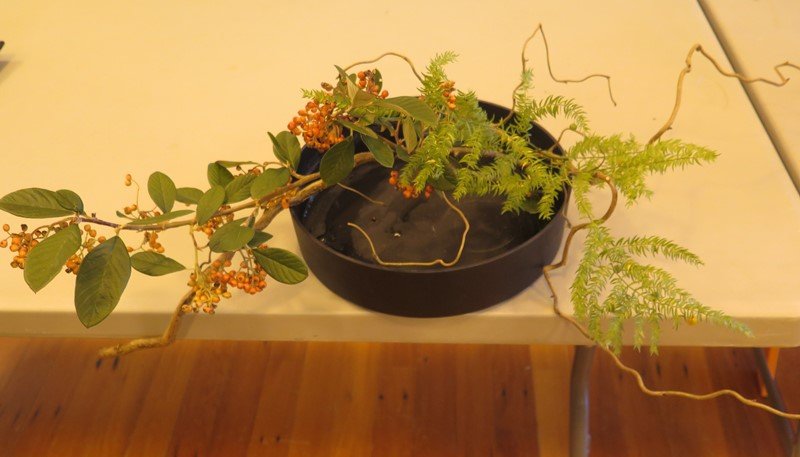Creating an arrangement without a kenzan is often one of our more daunting lessons. Whilst the text books suggest using wire or pins/nails to create a structure, Masako introduced us to the “rubber band” as a fixing method. She commented on the difficulty of creating balance in the structure, and suggested adding quite light flowers so as to not upset that initial balance. Masako’s first arrangement has several pieces of conifer held together with a rubber band at the top, sitting on a dinner plate. She then added 3 tulip buds and some purple Limonium. The second arrangement had six leucadendrons of different lengths, held together again with a rubber band near the top, sitting on a rimmed cake tin lid. To this she added one stem of alstroemeria. Masako commented that these two arrangements could be created when on holiday, for example, when access to usual vases or kenzan were not available. Masako’s last arrangement involved 3 large branches which she fastened together by winding a rubber band around one trimmed stem, and then winding it around another one. To this she added a bunch of Limonium and a bunch of leucadendrons. One of the important things we all learned was to put the water into the vase when the arrangement was finished as leaves and dirt will inevitably fall off the branches as the arrangement was made.
Masako led a workshop on how to arrange flowers and branches in a suiban without a kenzan
Masako with her three arrangements showing materials placed in suiban containers without using kenzan












































